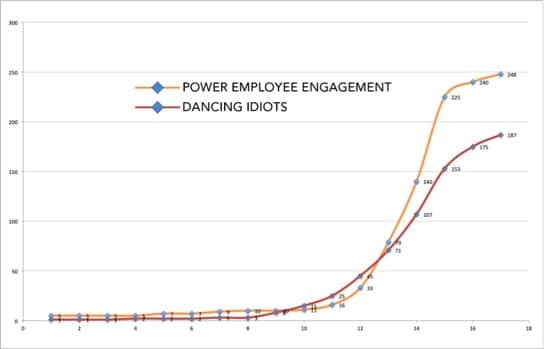Ryan Rogers remembers the day he first got into technology. He was a freshman in college, with $40 and a broken computer to his name. With no money to get it fixed and no technical expertise whatsoever, he turned to Google in search of a how-to video to help him replace the hard drive. The search results opened his eyes to a whole world of people leveraging technology to improve their everyday lives, and sparked his love affair with technology.
That love blossomed into a passion that would not only influence his career but also transform his future. While a project engineer at Power Construction in Chicago, IL, Rogers and his project manager, Peter Huey, took it upon themselves to start using Bluebeam Revu on a project. It wasn’t long before Power Executive Vice President Bob Gallo asked Rogers if he would be willing to lead the rollout effort by taking on the position of Technology Operations Manager at Power. He happily accepted and made the transition from engineering to IT.
It was during this time that Rogers also fell in love with TED Talks, videos of presentations from TED conferences that clock in at 18 minutes or less and cover scientific, cultural, academic and other topics meant to inform and inspire the public. He began watching the short videos over lunch as a way to break up the monotony of the typical construction workday. “Due to the pace of construction we were at for most of my early career, lunch at my desk was a typical occurrence. TED Talks allowed me to sneak away for 20 minutes and stretch my creative muscles,” Rogers explains. During the transition into his new career, his daily dose of TED continued.
One day, he came across a talk by entrepreneur Derek Sivers entitled, “How to Start a Movement,” featuring a shirtless man dancing alone at a music festival. Although the man initially started off on his own, this “dancing idiot”—as Rogers affectionately refers to him—was soon joined by another dancer. The dancing idiot immediately embraced this new dancer as an equal. This was a key moment because, as Sivers relays, “The first follower is what transforms a lone nut into a leader.” After that first person has the courage to follow the dancer, it doesn’t take long for others to start joining in, and thus begins a movement.

Rogers was floored by how much it reminded him of Power’s company-wide rollout of Bluebeam Revu. Just like the lone dancer, adoption had started off slowly at first, but as more and more “followers” started to come on board, the movement gained momentum. And, by recognizing the potential in rolling out new technology at the company, Rogers’ new boss, Gallo, had in essence become his first follower, transforming Rogers into a leader.
Fascinated by the similarities between the two, Rogers plotted out the Bluebeam adoption rate at Power against the number of dancers that joined the dancing idiot’s movement. Interestingly enough, when he compared his graphs of each, the results were almost identical.
Rogers continued to be influenced by this approach as he further implemented new technologies at Power. “You’re trying to find that face in the crowd that’s acknowledging key points in meetings. Someone who will hop on board as your first follower,” he explains. “And, a good follower has to fully commit and be invested in the cause. If they have anything ill to be gained from fully adopting, I don’t think it works.”
What advice does Rogers have for dealing with those who aren’t quite ready to start dancing, or who may never be? “Let them hate,” he jokes. “There are always going to be naysayers coming at a change effort from every angle, because their success isn’t invested in the cause’s success. Just kindly remind them you’ve got other fish to fry and move on. They’ll probably come around eventually.” In other words, keep on dancing. Rogers acknowledges that this style of leadership may not work in every situation. “I think one’s leadership approach should be tailored to every situation. If you’re working with people who already embrace technology, the ‘dancing idiots’ style probably won’t apply to them, but to a group of people that don’t share the same norms and values, it absolutely does.”
Ultimately, once Power had reached the point of full implementation, Rogers decided it was time to move on to a new challenge. As a company, Power had reached the top of the adoption curve, and it was time to ride the wave of all the benefits technology had brought them. Knowing that this meant his path there would most likely return him to the field, Rogers decided to make a bold change and start his own firm, Ninth Cloud Consulting. “I had been a ‘wannabe’ entrepreneur for a long time, and figured there’d never be a better opportunity than now,” he shares. That desire, coupled with his ability to easily communicate with people of all levels, from the foreman on the jobsite to a Senior VP, was enough to help him finally make the leap.
And, with the construction industry currently booming, he’s optimistic about the future. “I read somewhere that in 2014, one in seven new jobs created was in the construction industry. That’s a significant portion of our society relying on paper and less-than-efficient workflows to do their jobs. I think there’s a lot of ground to be gained, and I’m excited to see what we come up with in the future.”
So, what would Rogers say to those seeking to be better leaders? “Once you find your ‘true believers,’ or the ones who will stick with you until the end, it’s critical to find out what’s important to them. Have those conversations early on, so you’ll know that you’ve got each other’s backs and have established what you need from each other to be successful.”
And his advice to those who are still grappling with implementing new technology within their organizations? “Focus on your first follower, because they’re the lynchpin to the whole thing. Without someone else to lead, you’re just a dancing idiot.”















